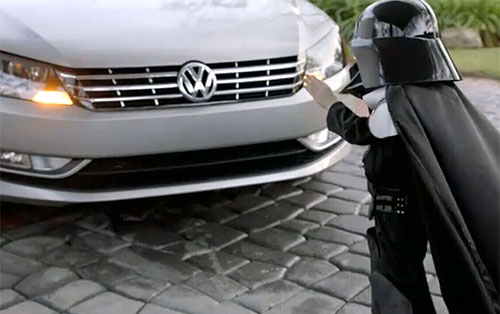TV's Enduring Appeal
These days any self-respecting marketer needs to be able to talk comfortably about Google Adwords, QR Codes, Facebook Check-Ins and so on. But the inevitable appearances of new technologies and new ways of doing things always raise two important questions. First how good are the new technologies and what do they enable us to more effectively than what we have been doing already? And second, is it time to throw out the old ways or do they still have a role to play.

One medium that is now frequently dismissed is TV advertising, with critics pointing to the plethora of channels and ad skipping technologies that are available to consumers. But its power to influence viewers and change their behaviour patterns continues unabated, ably supported in some cases by social media. Take the example of last year’s most popular advertising campaign, Volkswagen Passat’s The Force.
The Passat has been very much a niche brand in the mid-sized car segment in the US, a long way behind the market leading Toyota Camry and Honda Accord. Television advertising became the centrepiece of its ambitious campaign to drive sales from circa. 10,000 units/year to 10,000/month. The new Passat was due out in September 2011, so the campaign included an advert to be aired during the Super Bowl in February to build awareness and re-run in September/October to coincide with the brand launch. The resulting marketing and financial numbers were impressive. The ad attained 32 million views on YouTube during the week after the Super Bowl and quickly moved into the Top 10 most popular viral videos of all time. Awareness of the brand grew by 17 per cent post campaign and the percentage of customers who would consider buying a Passat trebled. Finally, year-on-year sales for the September-December quarter jumped by 116 per cent with the result that a campaign which cost US$8.2million generated incremental sales revenue of US$213million or a return on investment of approx. 25:1. And that’s the kind of return that many other marketing communications techniques would do well to match!
The Force illustrates again the enduring power of visual media. The ad scored relatively high on dimensions like memorability, appeal and involvement. And it is this last variable that is key. The ad’s charm and warmth pushed the emotional buttons of its key audience which was adults with young families. TV has been shown to be a low-attention, high-involvement medium. You watch these emotionally powerful adverts, and without even necessarily being conscious of it, the brand moves into your consideration set and the next thing you are down at your local dealer taking a test drive!






 John Fahy
John Fahy